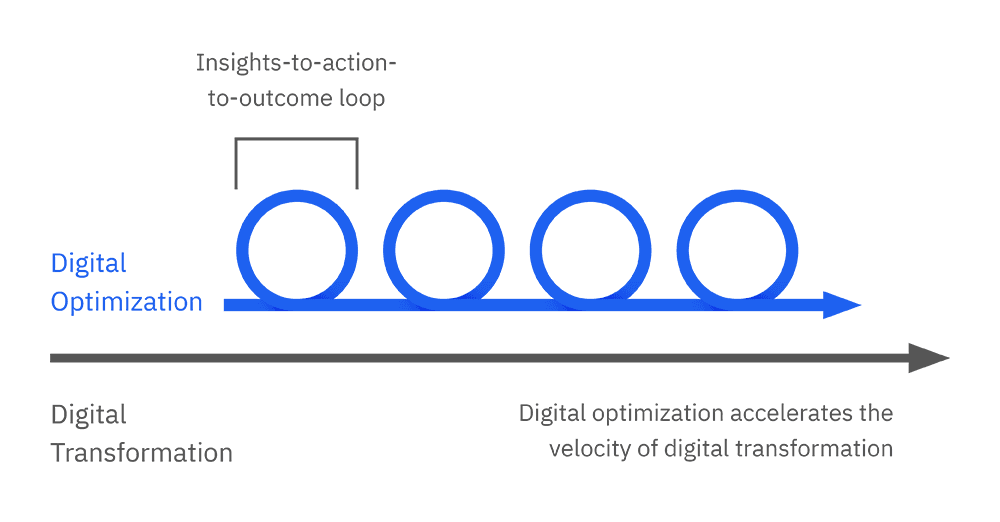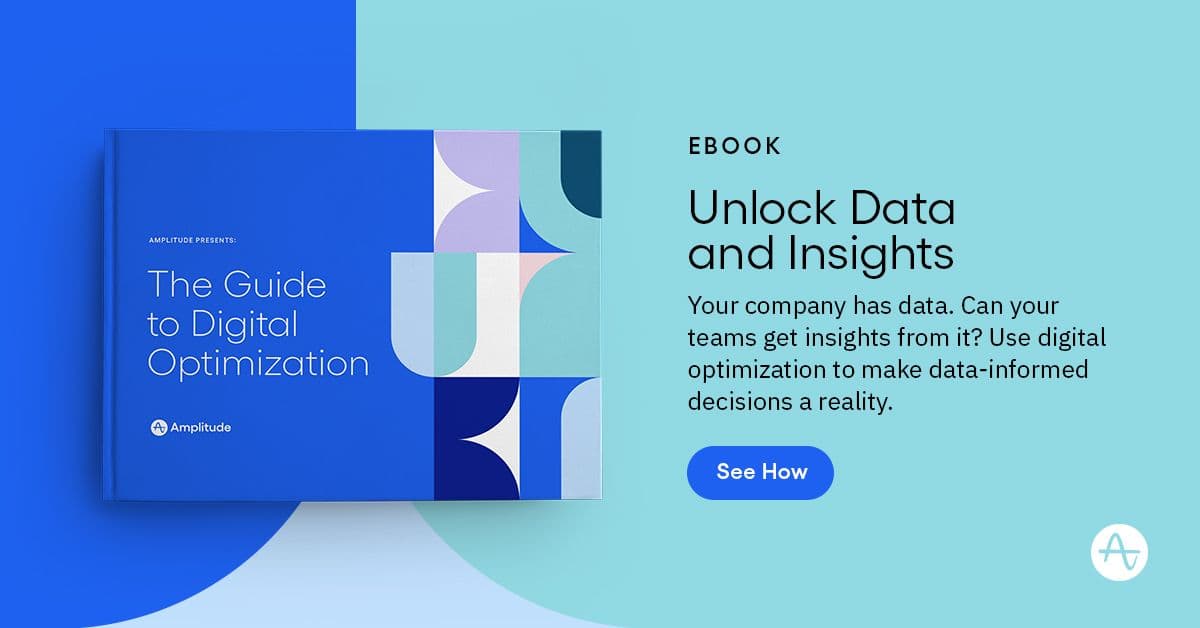Digital Transformation Case Studies: 3 Successful Brand Examples
Learn how three companies—Walmart, Ford, and Anheuser-Busch InBev—successfully transformed their business through digital initiatives to improve the customer experience.
Originally published on March 30, 2022
Browse by Category
Digital transformation is a process in which a company invests in new digital products and services to position it for growth and competition. A successful digital transformation improves the customer experience and enhances the way a company operates behind the scenes.
During a digital transformation, your business deploys new products and technologies and develops new ways to connect with your customers. Once the investment in digital begins, your business can use feedback and data to identify growth opportunities.
The three case studies below—from Ford, Walmart, and Anheuser-Busch InBev (AB InBev)—show how legendary companies went beyond simply creating an app and truly re-thought how digital transformation efforts supported sustainable growth for the business.
Key takeaways
- A digital transformation is a major business transformation that employs technology to meet business goals and fundamentally change how companies operate.
- A digital transformation drives new products and services that improve the customer experience.
- A digital transformation gives you more informative behavioral data and more touchpoints with the customer.
- AB InBev, Walmart, and Ford invested in digital technology to accelerate internal processes and develop new digital products, which gave them valuable data on the customer experience and influenced future business investments.
3 digital transformation case studies
Here are three examples of digital transformation. These leading companies carefully considered how new technology could generate data that made internal processes more efficient and produced insights about how to grow customer value.
AB InBev
Brewing company AB InBev underwent a digital transformation while compiling its network of independent breweries into a unified powerhouse. One of the team’s priorities was moving all their data to the cloud. By doing so, AB InBev enabled all employees to quickly and easily pull global insights and use them to make data-backed decisions.
For example, more accurate demand forecasting means AB InBev teams can match supply with demand, which is essential for such a large company with a complex supply chain. Access to big data from all the breweries means employees can experiment faster and roll out changes that improve business processes.
Gathering more data and opening up that data to internal teams was just the first step of the process, though. AB InBev capitalized on its digital investments by launching an e-commerce marketplace called BEES for its SMB customers—the “mom-and-pop shops”—to order products from. With the BEES platform, AB InBev found that their small and medium-sized businesses browsed the store on the mobile app and added items to their cart throughout the day. However, they only made the final purchases later in the evening.
Based on this behavioral data, the BEES team started sending push notifications after 6:00 p.m. recommending relevant products, which led to increased sales and greater customer satisfaction. Through these efforts, BEES gained over 1.8 million monthly active users and captured over $7.5B in Gross Merchandise Volume.
By closely monitoring metrics such as user engagement and purchasing patterns on the BEES platform, AB InBev has made a big impact with its marketing strategies and improved customer retention.
Jason Lambert, SVP of product at BEES, credits their success with the hard data that told them how their customers behaved and what they needed: “It turned out to be a thousand times better than any of our previous strategies or assumptions.” BEES used behavioral analytics to respond quickly, changing the buying experience to match the needs and habits of their retailers.
Walmart
As a traditional brick-and-mortar retailer, Walmart began a digital transformation by opening an online marketplace. However, digital transformation is an ongoing process—it doesn’t end at the first website. A digital transformation means companies refocus their operations around digital technology. This usually happens both internally and in a customer-facing way.
To drive more customer value through digital touchpoints, Walmart set up mobile apps and a website to enable customers to purchase goods online. After analyzing customer behavioral information from its app, Walmart added more services such as same-day pickup, mobile ordering, and “buy now, pay later.”
These changes were made to meet customer expectations and improve the customer experience. Walmart’s introduction of a seamless online shopping experience represents a pivotal step in digital innovation, setting new standards for retail convenience and efficiency.
In 2024, Walmart announced an AI-powered logistics product called Route Optimization. This product uses AI to find the most straightforward driving routes, pack trailers efficiently, and reduce miles traveled. In addition to using this product internally, Walmart plans to offer it to other businesses that need to employ more efficient supply chain and logistic processes.
Aside from improving customer experience and logistics, Walmart’s head of mobile marketing, Sherry Thomas-Zon, also notes the importance of data—and access to data—in digital transformations. “Our marketing and product teams are always looking at numbers,” Thomas-Zon said. “It keeps our teams agile despite our size and the increasing amount of data we collect and analyze.”
Ford
Ford has embraced several digital transformation initiatives, including using technology to transform and improve manufacturing at one of its biggest automotive factories.
Not having the correct parts available holds up workers and slows down the production process. Ford introduced a material flow wireless parts system so they could track the quantities of different parts and make sure there were enough available. Ford’s use of automation has significantly improved its inventory management process by reducing manual tasks and enhancing worker efficiency.
In 2016, Ford also introduced a digital product for its customers: the FordPass app. It enables Ford owners to control their vehicles remotely. For example, drivers can check their battery or fuel levels and lock or unlock their cars from their phones.
In 2024, Ford took its digital transformation even further when it launched the Ford and Lincoln Digital Experience. Key features include personalized vehicle settings, real-time traffic updates, and seamless integration with smart home devices. The platform also provides advanced navigation, remote control of vehicle functions via the FordPass app, and in-depth vehicle health monitoring.
To capitalize on these digital touchpoints, Ford uses data from its app to improve user experiences. With the ability to capture and analyze data in real-time, Ford’s leadership can now make quicker, more informed decisions that directly enhance operational efficiency and customer satisfaction.
Ford’s success is grounded in the same process as Walmart and AB InBev. They used their digital transformation to gather detailed information about how customers interact with their products. Then, they made data-driven decisions to provide more value.
Overcoming common digital transformation challenges
It’s not called a transformation for no reason. You’re changing the way your business operates, which is no easy feat. Planning and effective change management strategies are key to overcoming digital transformation challenges.
Create a digital transformation strategy roadmap that outlines your integration strategy and details how this will affect your teams, processes, and workflows. Once you’ve created your plan, share it with the entire company so everyone can use it as a single reference point. Use a project management tool that enables team members to get a big-picture overview and see granular details like the tasks they’re responsible for.
It takes time for teams to onboard and move away from what was successful under the previous system, for example, shifting from heavyweight to lightweight project planning. Make sure you factor some breathing space into your roadmap—giving everyone a chance to get used to the new way of operating.
As part of a digital transformation, you’ll want your team to develop new skills as well. Upskill your team by incorporating digital skills into your employee development plans. Provide people with opportunities to learn and then track their progress. Promote platforms like LinkedIn Learning to help your teams understand the nuances of digital transformation and boost their skills.
If you believe there’s an end-state to digital transformation, more challenges will arise. New technology and consumer behaviors are always emerging, meaning digital transformation is ongoing. It’s not something you’ll complete in a week. Rather, it’s a continuous state of experimentation and improvement.

At Amplitude, we refer to this process as digital optimization. If digital transformation brings new products, services, and business models to the fold, then digital optimization is about improving these outputs. Both digital transformation and digital optimization are important—digital transformation signals the start of new investments, and digital optimization compounds them.
Tips for building a digital transformation strategy
Examine how each part of the transformation will affect your customers and your employees. Then, you can be intentional and introduce initiatives that positively impact your business.
Diagnose what you want from a digital transformation first
There are different ways of approaching a digital transformation. Some companies prefer to implement an all-inclusive digital strategy, transforming all parts of their organization at the same time. Others opt for a less risky incremental strategy. Every company is different. To choose the best approach, examine your whole organization and analyze where digital systems could help.
Consider your business goals. Investigate how a digital transformation could impact the customer experience. What new products could you provide? How could you improve your services? For example, you might use artificial intelligence to create a chatbot that reduces customer service wait times—or purchase software that does the same.
You’ll also want to review your business processes. How could a digital transformation speed up your current workflows, improve your operations, or enable more collaboration between teams? Asking these questions lets you challenge the way you operate and will help you identify problems in your organization that you might not have noticed before. For example, perhaps your deliveries are often delayed, and you could make delivery smoother by digitizing elements of your supply chain.
Get cross-team involvement
Though different teams may work separately, your customers are affected by each department. Collaboration elevates everyone’s work because it means people can make informed decisions.
Make sure you get input from all of the right stakeholders when you create your digital transformation strategy. Ask:
- What processes hold you up?
- Where are the bottlenecks?
- What data would be useful for you?
Enable everyone to access the data they need without input from anyone else. Help your employees improve their data literacy. Start by training all your employees to use your organization’s data tools and software. To help everyone in your organization access and analyze data, adopt easy-to-use self-service tools (e.g., an analytics tool and a CRM). Then, lead by example. Provide inspiration by using data storytelling in your presentations to explain the decisions you make.
Encourage collaboration between teams by creating shared resources so they have spaces to present insights and submit suggestions. This could be as simple as creating a Google Doc for brainstorming that multiple teams can access or sharing charts directly within your analytics solution, like with Amplitude Notebooks. Then, you can start to experiment and make improvements to the digital customer experience like Walmart, Ford, and AB InBev did.
Once your digital transformation is moving, a digital optimization strategy is an opportunity to generate growth. Your digital transformation initiatives will continue in parallel, and the process will become a feedback loop:
- Deploy new digital systems and products.
- Analyze the data that comes forth from these investments. Use it to draw insights about your customers or processes.
- Make decisions based on the data and make changes.
- Repeat.
Always focus on your customers
Keep customer needs at the heart of your work. Let them guide you as you undergo digital transformation. As you gather more data about how your customers interact with your new digital products, use it to make the experience even better for them. This will lead to more trust and loyalty and, ultimately, more recurring revenue.
To continue your learning about digital transformation and optimization, join an Amplitude workshop or webinar or read our Guide to Digital Optimization.
References
- MIT Sloan. How to build data literacy in your company
- Ernst & Young. How global supply chain strategy is changing and what comes next
- Datanami. From Big Beer to Big Data: Inside AB InBev’s Digital Transformation
- Predictable Profits. How Ford Embraced Digital Transformation
- APMG International. Heavyweight vs Lightweight Management

Mallory Busch
Former Senior Content Marketing Manager, Amplitude
Mallory Busch formerly ran the Amplitude blog, frequently named a best blog for product managers. She also created AmpliTour, the live workshop for beginners to product analytics and 6 Clicks, the Amplitude video series. She produced the Flywheels Playbook, wrote The Product Report 2021 and produced The Product Report 2022. A former developer and journalist, Mallory's written work and coding projects have been published by TIME, Chicago Tribune, and The Texas Tribune. She graduated from Northwestern University.
More from Mallory





